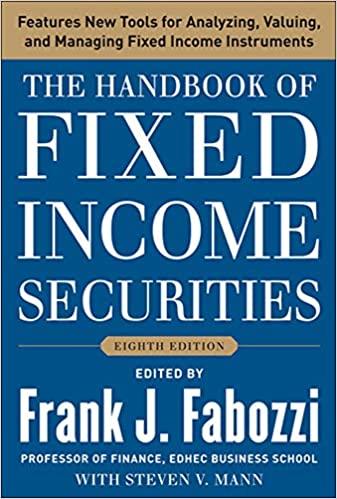Chapter 11- Mini Case Shrieves Casting Company is considering adding a new line to its product mix, and the capital budgeting analysis is being conducted by Sidney Johnson, a recently graduated MBA. The production line would be set up in unused space in Shrieves's main plant. The machinery's invoice price would be approximately $200,000, another $10,000 in shipping charges would be required, and it would cost an additional $30,000 to install the equipment. The machinery has an economic life of 4 years, and Shrieves has obtained a special tax ruling that places the equipment in the MACRS 3-year class. The machinery is expected to have a salvage value of $25,000 after 4 years of use. The new line would generate incremental sales of 1,250 units per year for 4 years at an incremental cost of $100 per unit in the first year, excluding depreciation. Each unit can be sold for $200 in the first year. The sales price and cost are both expected to increase by 3% per year due to inflation. Further, to handle the new line, the firm's net working capital would have to increase by an amount equal to 12% of sales revenues. The firm's tax rate is 40%, and its overall weighted average cost of capital is 10%. e. Estimate the required net working capital for each year and the cash flow due to investments in net working capital. f. Calculate the after-tax salvage cash flow. g. Calculate the net cash flows for each year. Based on these cash flows, what are the project's NPV, IRR, MIRR, PI, payback, and discounted payback? Do these indicators suggest that the project should be undertaken? h. What does the term "risk" mean in the context of capital budgeting; to what extent can risk be quantified; and, when risk is quantified, is the quantification based primarily on statistical analysis of historical data or on subjective, judgmental estimates? i. (1) What are the three types of risk that are relevant in capital budgeting? (2) How is each of these risk types measured, and how do they relate to one another? How is each type of risk used in the capital budgeting process? Chapter 11- Mini Case Shrieves Casting Company is considering adding a new line to its product mix, and the capital budgeting analysis is being conducted by Sidney Johnson, a recently graduated MBA. The production line would be set up in unused space in Shrieves's main plant. The machinery's invoice price would be approximately $200,000, another $10,000 in shipping charges would be required, and it would cost an additional $30,000 to install the equipment. The machinery has an economic life of 4 years, and Shrieves has obtained a special tax ruling that places the equipment in the MACRS 3-year class. The machinery is expected to have a salvage value of $25,000 after 4 years of use. The new line would generate incremental sales of 1,250 units per year for 4 years at an incremental cost of $100 per unit in the first year, excluding depreciation. Each unit can be sold for $200 in the first year. The sales price and cost are both expected to increase by 3% per year due to inflation. Further, to handle the new line, the firm's net working capital would have to increase by an amount equal to 12% of sales revenues. The firm's tax rate is 40%, and its overall weighted average cost of capital is 10%. e. Estimate the required net working capital for each year and the cash flow due to investments in net working capital. f. Calculate the after-tax salvage cash flow. g. Calculate the net cash flows for each year. Based on these cash flows, what are the project's NPV, IRR, MIRR, PI, payback, and discounted payback? Do these indicators suggest that the project should be undertaken? h. What does the term "risk" mean in the context of capital budgeting; to what extent can risk be quantified; and, when risk is quantified, is the quantification based primarily on statistical analysis of historical data or on subjective, judgmental estimates? i. (1) What are the three types of risk that are relevant in capital budgeting? (2) How is each of these risk types measured, and how do they relate to one another? How is each type of risk used in the capital budgeting process








